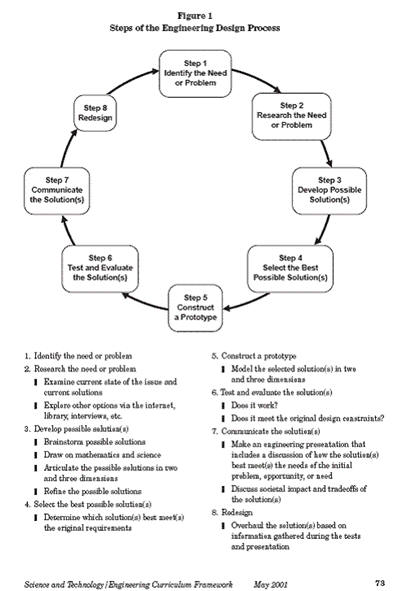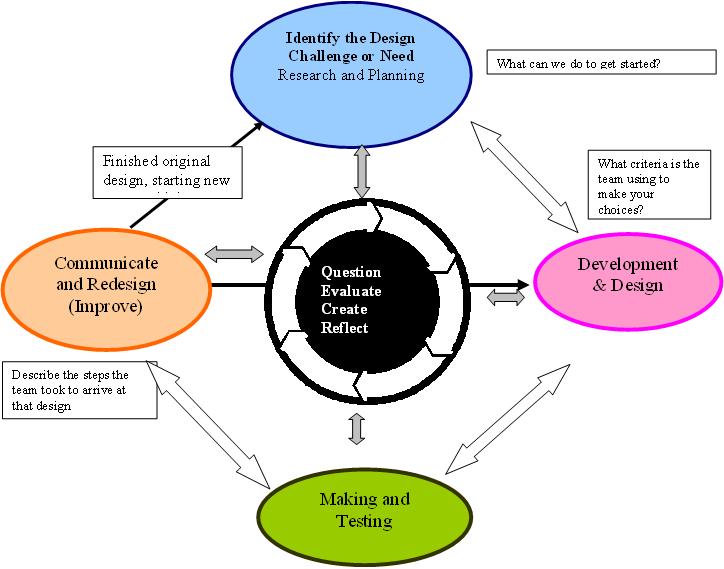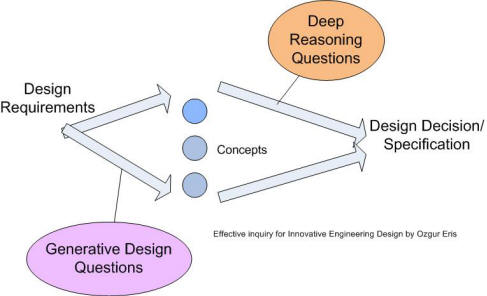 |
The design
process is a series of questions. We generate many ideas
with "Generative Design" questions and then make our
selection with a series of "Deep Reasoning' questions
It's the divergent and convergent process. |
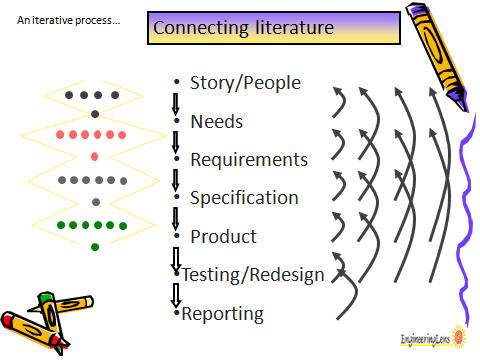 |
On the left side, we see the
divergent and convergent thinking happening as many ideas
are created and the reduced base on what will work and meet
the needs.
This is creative and critical thinking.
On the right side we see
the iterative nature of the
process as things are tried, found to need a change and then
repeated until it is correct.
|
|
created by Mark Somerville ... Olin College |
| |
|
A problem is nothing more than an opportunity
in work clothes. A successful business person pays attention
to problems, converting the problems into opportunities and
deciding which opportunities are worth pursuing.
Thinkertoys, Michael Michalko p22
|
'We
are continually faced with a series of great opportunities
brilliantly disguised as in insoluble problems. John W
Gardner
|
|
The core of
the engineering design process:
Identify
the problem
Generate
possible answers
Select
a solution |
|
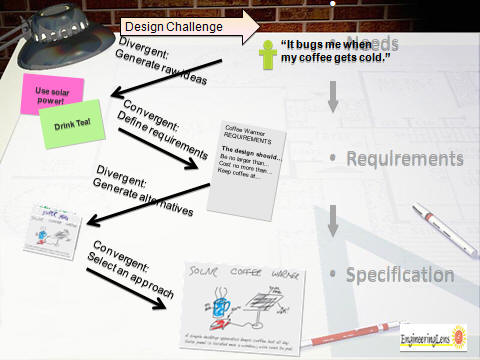 |
As an example: Our problem or design
challenge is to find a way to keep the coffee from getting
cold. |
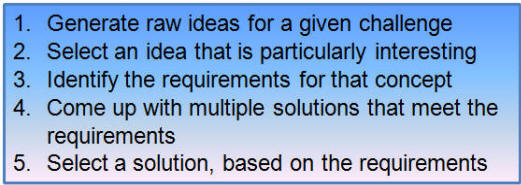 |
n stories,
we find many design challenges the characters have. The
students need to follow this process to design a solution
for that interesting design challenge. |
Requirements:
Formalize what the design has
to accomplish
Function, interaction,
character
Specify the need, not the
solution:
–Good:
“provide space for a family of six to eat together”
–Bad:
“include a dining table in the middle of the room.”
|
It is with
the requirements of the design that the teacher can focus
the design in a certain direction. As an example, with the
story of the 3 pigs and the wolf, you can set the
requirements that they live on an earthquake fault line and
need to have their house design take that into consideration.
|
|
Generative Thinking Tools
Morphological Analysis
( Tool to help create more ideas by using
relationships to associate parameters.)
About
Brainstorming ( group tool to
develop many ideas.)
Brain-writing ( Creating ideas
individually.)
Shaping Ideas ( Way to sort ideas based
from " Wild thoughts" to the "Status quo".)
Da Vinci Technique
The Bird exercise: A way to expand your thinking using
attributes.
How
many different kinds of birds can you identify?
See
write-up |
General Morphological analysis (MA) was
developed by Fritz Zwicky - the Swiss-American
astrophysicist and aerospace scientist based at the
California Institute of Technology (CalTech) -
Brainstorming developed by A.F. Osborne, 1941
Brainwriting ...
"Thinkertoys" by Michael Michalko p
216 |
|
Convergent thinking tools ( Deep
Reasoning )
Pugh Matrix
(Method to help make a decision on which of
many solutions would be better than a one in existence. )
Affinity Diagrams (Method to sort
many ideas into groups based on your criteria.)
Decision Matrix ( Method to help decide
on which items best meets your needs.)
|
|
| |
|
Scamper (PDF) |
Scamper is a checklist of idea-spurring
questions. To use SCAMPER:
Ask SCAMPER questions about each step of the
challenge to see what new ideas emerge. |
|
Another Brain Storming process (word document) |
This is created by the IDEO corporation. A
design company that helps industry improve their
internal design methods. |
|
Six-trait Snowflake Model of Creativity (PDF) |
This model of creativity was developed by
Professor David Perkins
|
|
Finding design challenges
(PDF) |
An example that shows taking
a set of design challenges from Charlotte's Web and
seeing the relationship to science for a particular
challenge. |
|
Creative Problem Solving (PDF) |
Although creative problem solving has been around as
long as humans have been thinking creatively and
solving problems, it was first formalised as a
process by Alex Osborn, who invented traditional
brainstorming, and Sidney Parnes. Their Creative
Problem Solving Process (CPSP) has been taught at
the International Center for Studies in Creativity
at
Buffalo College in Buffalo, New York since the
1950s. |
|
![]()
